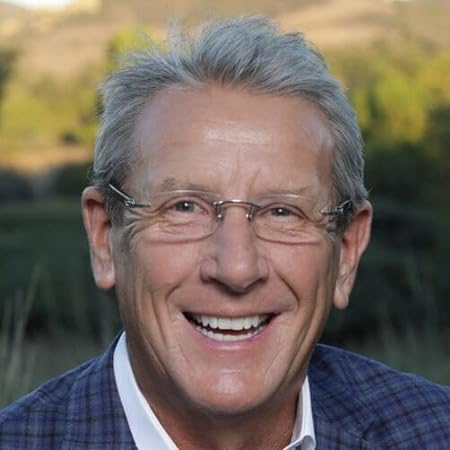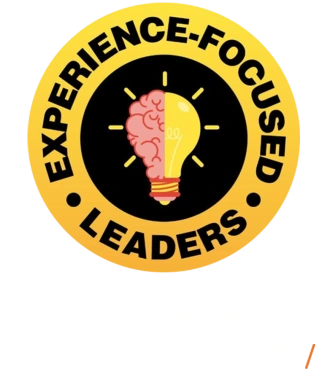Listen to the Podcast Episode on Your Favorite Platform

.svg.png)

Neuromarketing & Behavioral Science for Real-World Success
.png)
My audience pulled me in the direction of more applications of behavioral science—the principles of Robert Cialdini, the ideas of Daniel Kahneman, of BJ Fogg—which can be applied at scale by any size business, even tiny businesses. (Roger Dooley)
(00:01-07:34)
The speakers dive into how understanding how the brain works can improve marketing, from subtle cues on websites to messaging that drives action. Roger Dooley shares how techniques like scarcity, social proof, and cognitive fluency are used to capture consumer attention and influence decision-making.
Listeners will learn how to apply cross-disciplinary insights—blending neuroscience, economics, and social psychology—to design better customer and employee communications. Whether you're a large brand or a small business, Roger explains how these science-backed principles are accessible and actionable, allowing anyone to enhance their marketing efforts without major investments.
Through real-world examples, like travel websites showing "only 2 rooms left," Alex Shevelenko and Roger Dooley discuss how to combine behavioral science with design for maximum impact.
.png)
The Hidden Power of Reducing Friction in Customer Experience
.png)
Jeff Bezos and Amazon spent millions of dollars defending their one-click ordering patent, and the only advantage that gave them was one tiny click compared to their competitors. One tiny click—it doesn’t seem like much, but when Steve Jobs and Apple were introducing their new music store, they paid Amazon a million bucks to have that one tiny click advantage too. (Roger Dooley)
(07:34-16:49)
Roger Dooley shares stories about how companies often overlook simple fixes that could drastically improve user experience, like making unclickable items clickable when customers try to interact with them. Using tools like eye tracking and click tracking, businesses can understand what really matters to their users and optimize their platforms accordingly.
Alex Shevelenko builds on this by explaining how RELAYTO turns traditionally static content like PDFs and PowerPoint presentations into interactive experiences. By reducing the friction in navigation, such as making buttons clickable or simplifying how users access information, customers are more likely to engage deeply with content, discover more, and build a positive association with the product.
The conversation also touches on examples of how fintech companies have overtaken traditional banks by streamlining processes like account setup, where reducing clicks and wait times have a massive impact on customer satisfaction.
.png)

How Uber and Zoom simplified the user experience
.png)
Zoom was growing bigger and faster, surpassing huge companies like Cisco, Microsoft, and Google in actual volume. But how did they do that? For the first six to eight years of Zoom's existence, its mission was to make communications frictionless. It made sure that its platform was dead simple to use—to start a call, to join a call, to everything. It figured out the easiest, simplest way to do it. (Roger Dooley)
(16:49-25:47)
Roger Dooley shares examples of companies like Uber and Zoom, which revolutionized their industries by simplifying the user experience. He explains that many companies focus on competing with direct rivals, but the real benchmark should be consumer giants like Amazon, where seamless, friction-free interactions set a new standard.
Alex Shevelenko echoes this by explaining how his company is inspired by platforms like Netflix and Amazon, using their intuitive models to streamline enterprise content. Roger Dooley highlights that Uber disrupted the traditional taxi industry by recognizing and eliminating pain points no one had previously noticed. Similarly, Zoom’s ease of use allowed it to surpass established competitors, especially during the pandemic. However, Roger Dooley notes that Zoom has recently lost some of its frictionless experience, pointing to issues like forced updates that cause frustration.
The conversation shifts to the complexity of employee healthcare decisions, where Alex Shevelenko emphasizes the massive disconnect between consumer experiences and what employees face when navigating healthcare options. Both speakers agree that reducing friction in employee communications and benefits selection is crucial for improving engagement and optimizing company resources.
.png)
Empowered Employees, Happy Customers: The Secret to Success
.png)
I've had management guru Tom Peters on the Brainfluence Show a few times, and he emphasizes that your employees can never create a great customer experience if they’re unhappy. Your company’s experience for customers and employees must prioritize doing right by all your stakeholders. But I think the point is that if you have unhappy, disengaged people, they are likely not going to deliver the exceptional customer experience you're hoping for, and this is often overlooked. (Roger Dooley)
(25:47-32:08)
Roger Dooley shares insights from his conversations with management expert Tom Peters, highlighting how companies cannot create a great customer experience without first ensuring their employees are engaged and fulfilled. He gives examples from companies like Amazon, which has mastered customer experience but has faced criticism for neglecting its employees.
Roger Dooley discusses the importance of removing unnecessary processes and time-wasting tasks that demotivate employees. When businesses optimize for efficiency at the expense of employee satisfaction—like in some call centers where workers are pressured to shorten customer interactions—it negatively affects both the employee and the customer. Employees who feel pressured won't deliver the empathetic, engaging service customers want.
Alex Shevelenko builds on this by quoting Roger's book Brainfluence, emphasizing the subconscious cues customers pick up from employees. A confident, passionate employee—supported by the company—creates a better customer interaction, leading to a positive feedback loop for the business. He also mentions how giving customers value upfront, without immediately asking for something in return, can create genuine, trust-based relationships. This approach empowers employees to engage more authentically, boosting overall satisfaction on both sides.
.png)

Resolving Customer Pain Points and Boosting Employee Morale
.png)
Reed Hastings describes in his book "No Rules Rules" about Netflix, where they said, "Don’t worry about it; we don’t have a travel policy or an employee handbook. Do what’s right for the company and leave it at that." If you do something that ends up not being right for the company, they might tell you once and say, "Hey, this wasn’t good judgment." If it happens two or three times, then they might say goodbye. But they got rid of all these administrative tasks that were wasting people's time and showed a lack of trust. (Roger Dooley)
(32:08-43:46)
Roger Dooley highlights the power of passionate employees—those who believe in the product they are selling—explaining that when employees are genuinely excited about what they do, customers can feel the difference. Even in industries that might seem less thrilling, like industrial chemicals, employees who know they’re providing value can inspire confidence in customers.
The speakers also discuss how companies can better connect with their employees to improve the overall work experience. Two key questions that businesses should be asking: "What do our customers complain about?" and "How can we make your job easier?" By addressing these questions, companies can foster a more open, communicative environment, making employees feel heard and valued. This approach not only helps resolve customer pain points but also boosts employee morale.
A major theme that emerges is the importance of trust within organizations. Roger Dooley shares an experience from his corporate days, where unnecessary processes, like requiring every tiny expense to be documented, revealed a lack of trust in employees. He contrasts this with Netflix’s trust-first approach, where employees are empowered to act in the company’s best interest without the burden of excessive bureaucracy. Research shows that high-performing companies are those with high levels of trust, which creates a more productive and satisfied workforce.
.png)
Building Trust in a Distrustful World: Lessons from Leadership and User Experience
.png)
I think when you're building trust, you have to start with a few simple things. First, be trustworthy yourself. That goes a long way—no one will trust someone who doesn't behave in a trustworthy manner. The flip side of that is to be trusting. When you trust someone—whether it's a subordinate, a coworker, or a boss—you show that you're trusting them, and they're more likely to trust you. This ties into Cialdini's principle of reciprocity: when you do something for someone else, they're more likely to do something for you. (Roger Dooley)
(43:46-51:41)
The speakers emphasize how trust is foundational—not only in business but also in the social context of today’s mistrustful world. Alex Shevelenko brings up the challenge of building trust in a time when attention spans are short, likening it to "being a goldfish on adrenaline." He questions how leaders can communicate technical information without overwhelming people.
Roger Dooley offers simple but powerful advice: trust must be reciprocal. He explains that being transparent with both employees and customers is key. Leaders need to share openly about business challenges rather than keeping staff in the dark. This transparency builds loyalty and collaboration. He highlights Amazon’s customer-first approach, where the brand's trustworthy behavior has set the gold standard for customer experience.
Alex Shevelenko ties this idea back to the importance of meeting expectations. He shares his frustration with misleading tactics in marketing, like asking for an email to access content and then bombarding users with lengthy forms. This, he argues, breaks trust right from the start. Both speakers agree that to build lasting trust, leaders and marketers must focus less on transactional goals and more on creating transparent, honest interactions—whether with employees or customers.
.png)

How Simplicity, Transparency, and Motion Shape Modern Experiences
(51:41-1:02:12)
The speakers discuss the importance of simplicity when collecting user information—how overwhelming forms can break trust and cause potential customers to abandon them. Alex Shevelenko highlights that optimizing for one thing, such as leads, without considering the overall experience, often backfires.
Roger Dooley stresses that trust starts with being trustworthy and transparent, using Amazon as a prime example. He also introduces practical ways companies can make their processes more engaging, like using motion and playful elements (e.g., Lufthansa’s animated progress bars) to keep users involved and entertained. Alex Shevelenko ties this back to advertising principles, suggesting that incorporating motion and delight in employee and customer communications is a game-changer.
.png)
Check the episode's Transcript (AI-generated) HERE.
Other Episodes

Godard Abel | CEO of G2
S 01 | Ep 6 Where You Go for Software: Reach Your Peak


Dean Stocker | CEO of Alteryx
S 01 | Ep 8 Turning Your Customers Into Your Biggest Champions


Peter Fader | Co-Founder of ThetaCLV
S 01 | Ep 10 Turning Your Marketing Into Dollars

Author

Experience-focused Leaders is the #1 Multimedia Podcast! We talk to senior business & tech leaders about the experiences that move forward organizations, customers and society at large. True to form, we mix audio, video, web and eBook formats to turn these authentic conversations into personalized nuggets you'll remember & use.



.png)
